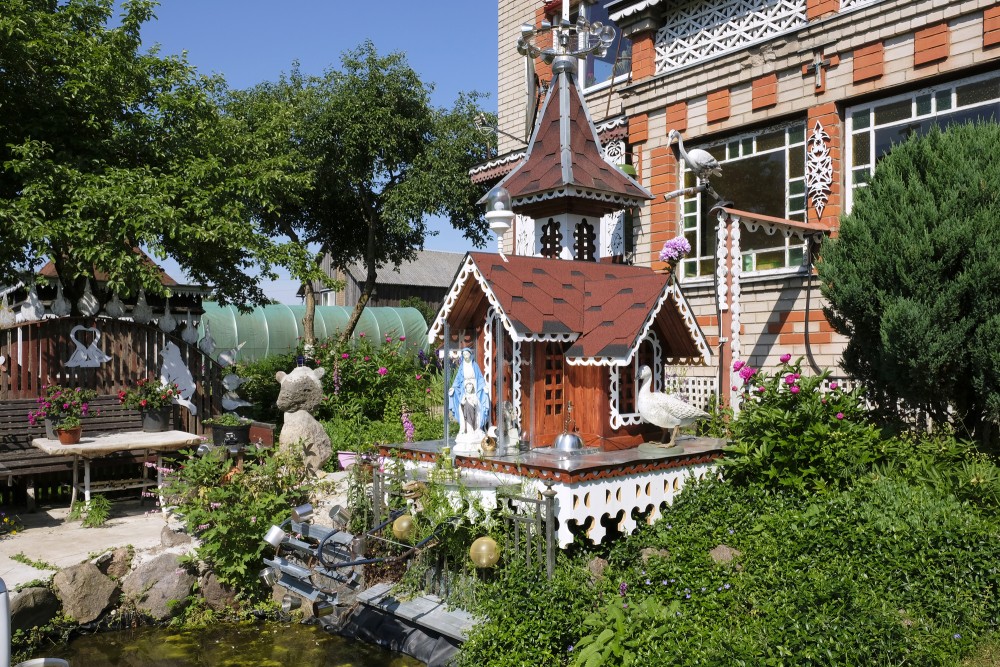Latvia’s traditional crafts reflect centuries of heritage, skill, and cultural pride. These handmade creations offer more than beauty. They carry stories, values, and deep connections to nature. Even in today’s digital world, these crafts remain highly relevant. Artisans continue creating with care, passing skills from one generation to the next. Their dedication ensures these traditions never fade. Let’s explore how Latvia’s traditional crafts thrive in modern life. From woven mittens to carved wood, each item has a soul. Latvia’s folk art lives on — stronger than ever.
The Heart of Latvia’s Traditional Crafts Lies in Its History
Latvia’s crafts date back to prehistoric times, rooted in everyday village life. People crafted tools, clothing, and decorations by hand. They used local materials like wool, linen, and wood. Skills passed down through families became part of cultural identity. These crafts were not hobbies — they were survival. Even today, Latvians respect these ancient methods deeply. Many modern artisans still follow traditional patterns and symbols. Historical events, including Soviet rule, threatened these traditions. Yet, they survived and adapted, proving their lasting importance.
Key historical highlights:
-
Origins trace back to prehistoric village life.
-
Families passed craft techniques from generation to generation.
-
Materials were always local — natural wool, flax, and wood.
-
Soviet occupation almost erased many folk traditions.
Weaving: The Most Beloved of Latvia’s Traditional Crafts
Weaving holds a sacred place in Latvia’s traditional crafts. Women once wove fabrics for weddings and holidays. The patterns carried deep symbolic meanings — often tied to protection, fertility, or nature. Today, you’ll find handwoven belts, shawls, and table linens in Latvian markets. Artisans use looms just like their ancestors did. Bright reds, earthy browns, and rich blues still dominate their designs. This craft connects Latvians to their roots with every thread. Cultural festivals keep the weaving tradition alive and visible. Young people now learn weaving at special workshops and camps.
Weaving traditions include:
-
Belts and shawls used in weddings and sacred ceremonies.
-
Symbols represent protection, family, and nature.
-
Weaving passed from mothers to daughters for centuries.
-
Workshops for youth are helping preserve this skill.
Woodcarving: From Ancient Tools to Modern Art
Latvia’s forests gave rise to another craft — woodcarving. People once made spoons, bowls, and furniture from birch and oak. This tradition still thrives, especially in rural regions. Carvers now make decorative items like masks, toys, and jewelry. Every piece tells a unique story through its shape and texture. Latvians celebrate wood’s natural beauty and power. Modern artists often blend old techniques with bold, new styles. You can find carved items in souvenir shops and museums. Latvia’s traditional crafts stay relevant by evolving creatively.
Woodcarving facts:
-
Birch, oak, and ash are most commonly used woods.
-
Traditional items include spoons, butter knives, and stools.
-
Modern designs mix function with visual artistry.
-
Carved goods are popular gifts and collectibles.
One inspiring example of traditional woodworking is the Wood Carver’s Farm “Jūras” in Vecumnieki. This family-run farm preserves ancient woodcarving techniques while welcoming visitors year-round. Guests can tour the workshop, watch live carving demonstrations, and even try carving themselves. The artists at “Jūras” specialize in handcrafted spoons, decorative panels, and traditional household items. Each piece reflects both personal craftsmanship and centuries of Latvian tradition. “Jūras” also offers educational programs for children and adults. It’s a beautiful destination for anyone interested in Latvia’s traditional crafts.
Pottery and Ceramics: A Craft Molded by Time
Pottery remains one of Latvia’s most enduring traditional crafts. Clay from the Latvian soil forms the base of these works. Ancient Latvians used pots daily — for food, water, and ceremonies. Today, ceramic artists continue shaping functional yet beautiful items. Many use age-old kilns and glazes passed through generations. You’ll often see earthy tones and geometric designs on their work. Traditional symbols still appear on cups, plates, and vases. Pottery studios now host tourists for hands-on crafting experiences. This growing interest helps preserve and promote Latvia’s traditional crafts.
Noteworthy pottery features:
-
Earth tones and natural glazes define the Latvian ceramic style.
-
Symbols on pots often represent fertility or the moon.
-
Handmade mugs and bowls are popular tourist items.
-
Studios across Latvia now offer pottery classes.
Knitting and Embroidery: Threads That Bind the Nation
Latvia’s knitwear tells stories through its intricate patterns. In cold winters, warm mittens became essential for survival. But they also carried spiritual meanings and personal pride. Each region developed its own patterns and color combinations. Embroidery complemented knitting with its bright, decorative threads. Today, fashion designers draw inspiration from these folk patterns. Many incorporate them into scarves, sweaters, and even handbags. Locals still knit and embroider for seasonal festivals and weddings. Through these crafts, Latvians honor both beauty and function. Latvia’s traditional crafts remain woven into daily life.
Cultural value of textile crafts:
-
Mitten patterns often indicate origin, status, or beliefs.
-
Each region has a distinct knitting style and color palette.
-
Modern fashion brands include traditional motifs.
-
Crafts still play a big role in holiday attire.
Metalwork and Jewelry: Old Symbols with Modern Sparkle
Latvia’s ancient tribes used metal not only for tools but also for ornaments. Bronze spirals, brooches, and rings carried protective meanings. These pieces still influence today’s handmade jewelry in Latvia. Craftsmen mix copper, silver, and amber in their designs. Amber, especially from the Baltic Sea, holds deep cultural value. Jewelry makers often use traditional symbols like the sun or the thunder cross. These motifs reflect Latvia’s pagan roots and cosmic beliefs. Many young designers now reinterpret old shapes with elegance. Latvia’s traditional crafts continue shining in the world of fashion.
Traditional jewelry materials and themes:
-
Amber is the most iconic material in Latvian jewelry.
-
Common motifs include the sun symbol and thunder cross.
-
Bronze brooches are worn during cultural events.
-
Metalwork mixes nature and mythology.
Festivals and Fairs Celebrate Latvia’s Traditional Crafts
Throughout the year, Latvians gather to celebrate their folk art. The most famous is the Latvian Song and Dance Festival. There, artisans sell handwoven fabrics, carved goods, and embroidered wear. Craft villages pop up during midsummer celebrations like Jāņi. Visitors learn about Latvia’s traditional crafts directly from makers. Many festivals host live demos, allowing people to try ancient skills. Children and tourists join in, making their own crafts. These events boost pride and awareness for heritage. Thanks to them, folk crafts stay visible and loved.
Popular festivals for traditional crafts:
-
Latvian Song and Dance Festival (every five years)
-
Jāņi (midsummer solstice) with folk craft markets
-
Riga Craft Fair held annually in June
-
Local town festivals often host artisan stands
Schools and Workshops Keep the Traditions Alive
Preserving Latvia’s traditional crafts requires teaching. Thankfully, many schools now include folk arts in their curriculum. Rural workshops offer training in weaving, carving, and pottery. Children learn about their culture by working with their hands. Universities also run programs for ethnographic art and design. These studies combine historical knowledge with modern techniques. Online platforms now offer video lessons for international learners. Master artisans take on apprentices to pass their skills forward. Latvia invests in keeping its cultural heritage alive and thriving.
Where to learn crafts today:
-
Folk craft schools in rural Latvia
-
University courses on ethnographic design
-
Local studios offering weekend workshops
-
YouTube and online platforms by Latvian creators
Interesting Facts About Latvia’s Traditional Crafts
-
Each region of Latvia has its own mitten design and meaning.
-
Ancient symbols like the Māra cross still appear in new embroidery.
-
Latvians used to give handmade belts as gifts of friendship.
-
A single handwoven belt can take several days to finish.
-
Some patterns in Latvian weaving are over 1,000 years old.
-
Wooden spoons were often carved as wedding gifts.
-
Amber from Latvia is 40 million years old and used in many crafts.
-
Craftsmanship was once a sacred skill passed from parent to child.
-
The largest folk craft fair happens every June in Riga.
In a fast-paced world, handmade items offer something rare: meaning and connection. Latvia’s traditional crafts remind people to slow down. They honor nature, history, and human creativity. Every woven scarf or carved bowl tells a personal story. Buying local crafts supports artists and rural communities. These objects bridge the past and the present beautifully. Young people continue innovating while staying rooted in tradition. Latvia proves that crafts are not just old — they are timeless. That’s why these skills must continue to thrive.

